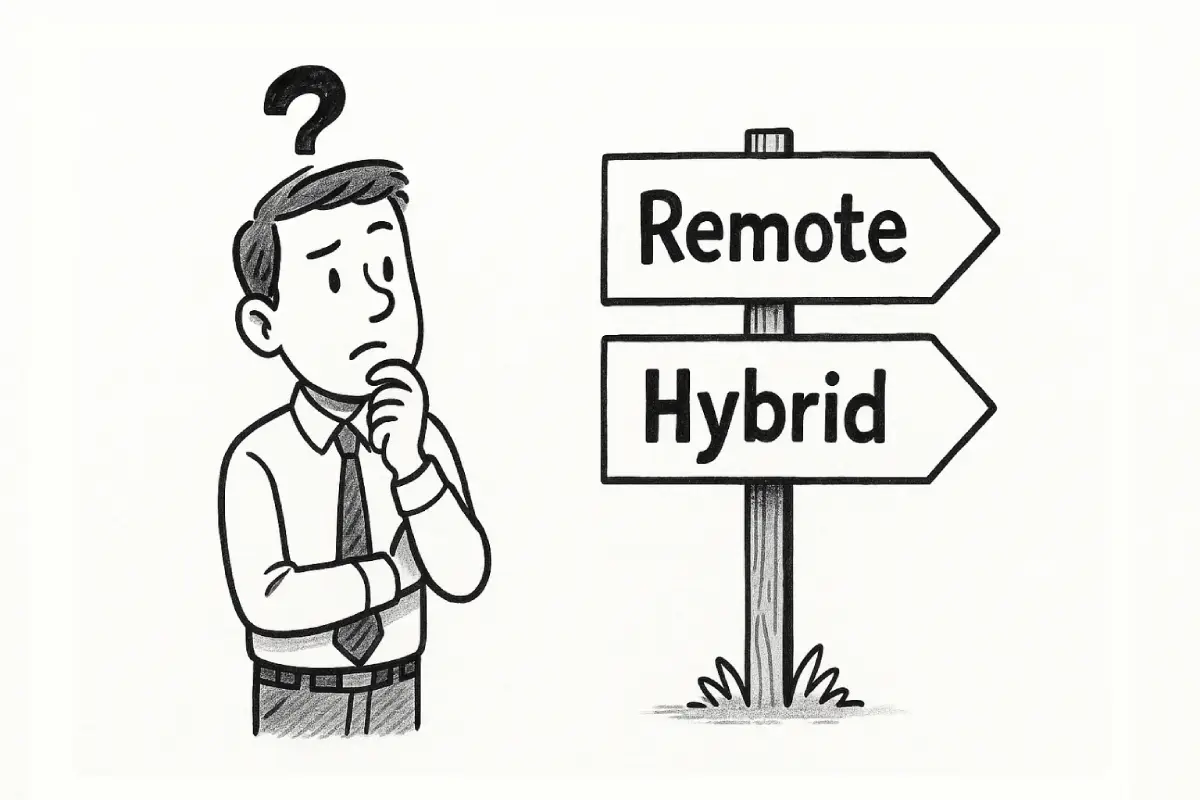The journey of remote work started with the emergence of telecommuting in the 1970s, but it has truly come into the spotlight with the advent of the internet. Today, advancements in broadband connectivity and cloud computing have not only made remote work viable but also highly efficient. I recall my first remote job, where the idea of logging in from home was both exciting and nerve-wracking. The initial days were filled with excitement over the newfound flexibility, tempered by a steep learning curve regarding self-discipline and time management.
Benefits of Remote Work
Flexibility and Work-Life Balance
One of the most celebrated benefits of remote work is the flexibility it offers. Being able to structure your workday around personal commitments rather than conforming to a rigid 9-to-5 schedule has allowed many to strike a healthier balance between their professional and personal lives.
In my experience, this flexibility meant that I could attend an early morning yoga class or pick up my children from school without having to worry about strict office timings. It wasn’t just about having more free time—it was about having control over my day, which greatly contributed to reducing stress and increasing overall satisfaction.
Increased Productivity and Autonomy
Remote work often provides an environment that fosters increased productivity. Without the frequent interruptions common in traditional office settings, many remote workers find themselves able to concentrate better and complete tasks more efficiently. Autonomy over one’s work process can lead to innovative problem-solving and creative approaches to projects.
I remember the first project I tackled entirely from home. Initially, it took some adjustment to find the right rhythm, but I soon discovered that the absence of the daily office chatter allowed me to delve deep into complex problems. This freedom to focus, combined with the ability to take short breaks when needed, not only boosted my productivity but also led to a genuine sense of accomplishment.
Cost Savings for Employees and Employers
Remote work can lead to significant cost savings on both ends. Employees save on commuting expenses, work attire, and daily meals outside the home. Employers, on the other hand, benefit from reduced overhead costs associated with maintaining large office spaces.
From my perspective, the savings were tangible. The reduction in commuting costs meant I could invest more in quality home office equipment, such as an ergonomic chair and a high-resolution monitor, which in turn enhanced my work comfort and efficiency. It was a win-win scenario that underscored the practical advantages of remote work.
Broader Talent Pool and Diversity
For employers, remote work means access to a global talent pool. Geographic boundaries become irrelevant when hiring the best candidates from anywhere in the world. This not only brings in diverse perspectives but also contributes to a more inclusive work culture.
Working on a remote team with colleagues spread across different time zones has been one of the most enriching experiences of my career. The cultural diversity and varied professional backgrounds have sparked innovative ideas and fostered an environment where learning from one another is the norm.
Challenges of Remote Work
Communication Barriers
While digital tools have made remote work possible, they sometimes fall short of replicating the nuances of in-person communication. Misunderstandings can easily arise from email or text-based conversations, and the lack of non-verbal cues often leads to a communication gap.
I recall an incident during a critical project phase where a misinterpreted message almost derailed our timeline. The absence of face-to-face interaction meant that what was intended as a simple clarification turned into a major delay. This experience taught me the importance of over-communicating and ensuring that all parties are on the same page.
Isolation and Mental Health Concerns
Another significant challenge of remote work is the feeling of isolation. Without the casual interactions of an office environment, many remote workers struggle with loneliness and a sense of detachment. The absence of daily human interaction can lead to mental health challenges, including anxiety and depression.
There were times during my early days of remote work when I felt profoundly isolated. The lack of spontaneous conversations and in-person camaraderie was palpable, especially during periods of intense workload. I learned that taking deliberate breaks to interact with colleagues, whether through virtual coffee breaks or scheduled video calls, is crucial in maintaining a sense of connection and emotional wellbeing.
Managing Distractions and Maintaining Focus
Home, while being a comfortable environment, is often rife with distractions. From household chores to the lure of personal hobbies, it can be challenging to maintain focus on work-related tasks. The blurring of boundaries between personal and professional spaces often leads to decreased productivity.
I vividly remember one particular afternoon when the comforting hum of a favorite TV show and the constant pull of household responsibilities disrupted my workflow. It took some time and experimentation to create a structured routine that minimized distractions and helped compartmentalize work time from personal time.
Technological and Infrastructure Issues
Reliability on technology is a double-edged sword in remote work. While digital tools enable remote collaboration, they are not immune to glitches and technical failures. Internet connectivity issues, software malfunctions, and cybersecurity concerns can all hinder productivity and cause significant stress.
During a critical client presentation, a sudden internet outage forced me to scramble for alternative solutions. The experience underscored the importance of having backup plans and ensuring that one’s home office is equipped with reliable technology. It was a reminder that while technology is the backbone of remote work, it requires constant vigilance and maintenance.

Strategies for Overcoming Remote Work Challenges
Effective Communication Tools and Practices
To combat communication barriers, it is essential to adopt a robust suite of communication tools and establish clear guidelines for their use. Video conferencing platforms, instant messaging apps, and collaborative project management software can help bridge the gap created by physical distance. Moreover, fostering a culture of transparency and regular check-ins can go a long way in ensuring that everyone feels informed and involved.
In my remote work journey, establishing regular video meetings and creating dedicated channels for specific projects greatly improved team collaboration. We learned that over-communication is better than leaving room for assumptions or misunderstandings. Setting clear expectations for response times and preferred communication methods also helped streamline our workflow.
Creating a Productive Home Office Environment
Setting up a designated workspace is critical to maintaining productivity and minimizing distractions. An ergonomic chair, proper lighting, and a clutter-free desk can transform your home office into a productivity haven. Additionally, establishing a routine that mirrors a traditional office day can help in separating work from leisure.
My transition to remote work was significantly smoother once I invested time in creating a comfortable and functional home office. This space not only boosted my efficiency but also served as a mental cue to shift into “work mode.” Simple actions like shutting the door and closing the office door at the end of the day helped me maintain a healthy work-life boundary.
Prioritizing Mental Health and Wellbeing
Remote work can sometimes lead to a sedentary lifestyle and feelings of isolation, which makes prioritizing mental health crucial. Regular breaks, physical exercise, and mindfulness practices can help mitigate the negative impacts on mental wellbeing. Additionally, scheduling social interactions—virtual or otherwise—can help alleviate feelings of loneliness.
I made it a point to incorporate short walks and mindfulness exercises into my daily routine. These small breaks not only helped me recharge but also prevented the monotony that can come from long hours at the computer. Over time, I noticed a marked improvement in both my mood and productivity, reinforcing the importance of self-care in a remote work setting.
Building a Remote Work Culture
Developing a strong remote work culture is key to overcoming many challenges associated with this work style. This includes establishing a sense of community through regular team-building activities, recognizing individual achievements, and fostering an environment where feedback is encouraged.
In our remote team, we began hosting virtual team lunches and informal coffee breaks that helped bridge the social gap. These activities were not just fun diversions but vital components in building trust and camaraderie among team members. Such initiatives made a significant difference in creating a cohesive team despite the geographical distances.
Personal Experiences with Remote Work
Transitioning to Remote Work: My Story
I still remember the excitement mixed with trepidation on my first day of remote work. The idea of trading the daily commute for a few extra minutes of sleep was exhilarating. However, the initial days were also a period of adjustment as I navigated the complexities of managing my time, setting up an effective workspace, and learning how to communicate virtually with my team.
One of my most memorable early experiences was when I had to present a major project update via a video call. Despite rehearsing meticulously, the lack of physical presence made it difficult to gauge the audience’s reactions. It was a steep learning curve, but each experience taught me the importance of clear communication, thorough preparation, and the need for backup plans when technology falters.
Lessons Learned and Best Practices
Throughout my remote work journey, I have learned several lessons that have significantly shaped my approach to working from home:
- Embrace Flexibility: Understand that remote work offers the flexibility to design your own schedule. Use this advantage to create a routine that maximizes your productivity while also allowing time for personal activities.
- Invest in Your Workspace: A well-equipped and comfortable home office is essential. Even small investments in ergonomic furniture and reliable tech can make a big difference.
- Communicate Proactively: Regular and clear communication is vital. Whether it’s a quick check-in or a detailed project update, ensure that your team is always in the loop.
- Set Boundaries: It’s easy to let work spill into personal time when your office is at home. Establish clear boundaries to avoid burnout.
- Prioritize Self-Care: Regular breaks, exercise, and social interactions—even if virtual—are crucial for maintaining mental health.
These practices have not only helped me overcome challenges but have also enhanced my overall productivity and job satisfaction.
Future of My Remote Work Journey
As remote work continues to evolve, so does my approach to it. I now see remote work not just as a temporary arrangement but as a long-term opportunity to grow professionally while maintaining a fulfilling personal life. I am continually exploring new tools and techniques to streamline my workflow, and I’m excited about the possibilities that lie ahead.
The journey is ongoing, and every day brings new lessons. I’ve learned that being adaptable and open to change is the key to thriving in a remote work environment. The future of work is likely to be hybrid, blending the best aspects of both remote and in-office experiences, and I look forward to embracing that evolution.
Balancing Benefits and Challenges in Remote Work
Remote work is a multifaceted experience, offering remarkable benefits like flexibility, cost savings, and a broadened talent pool, while also presenting significant challenges such as communication hurdles, isolation, and technological issues. The key to a successful remote work experience lies in recognizing these challenges and proactively addressing them through effective strategies and a commitment to self-care.
Reflecting on my own experiences, I’ve found that remote work has allowed me to develop a deeper understanding of my personal and professional needs. It has taught me that success isn’t just measured by productivity or profit margins, but also by the ability to create a balanced, fulfilling lifestyle. With the right mindset, robust communication practices, and a commitment to maintaining both physical and mental health, remote work can be not just a viable alternative to traditional office work but a superior way to live and work in today’s fast-paced world.
As we move forward, the remote work landscape will undoubtedly continue to evolve, influenced by technological advancements and changing societal needs. For those willing to embrace the change, remote work offers the promise of a more flexible, balanced, and rewarding career path. Whether you’re new to remote work or have been navigating its challenges for years, remember that each step you take towards optimizing your work environment is a step towards a more enriching professional life.
In this comprehensive guide, we’ve explored the various facets of remote work—from its evolution and benefits to the challenges it presents and strategies for overcoming them. My personal journey has been a testament to both the transformative power of remote work and the importance of continuously adapting and learning. I hope that by sharing my experiences and insights, you too can find ways to thrive in a remote work setting, making the most of the opportunities it offers while mitigating its challenges.
You might also like: Workcation: Combining Vacation and Productivity Without Burning Out









